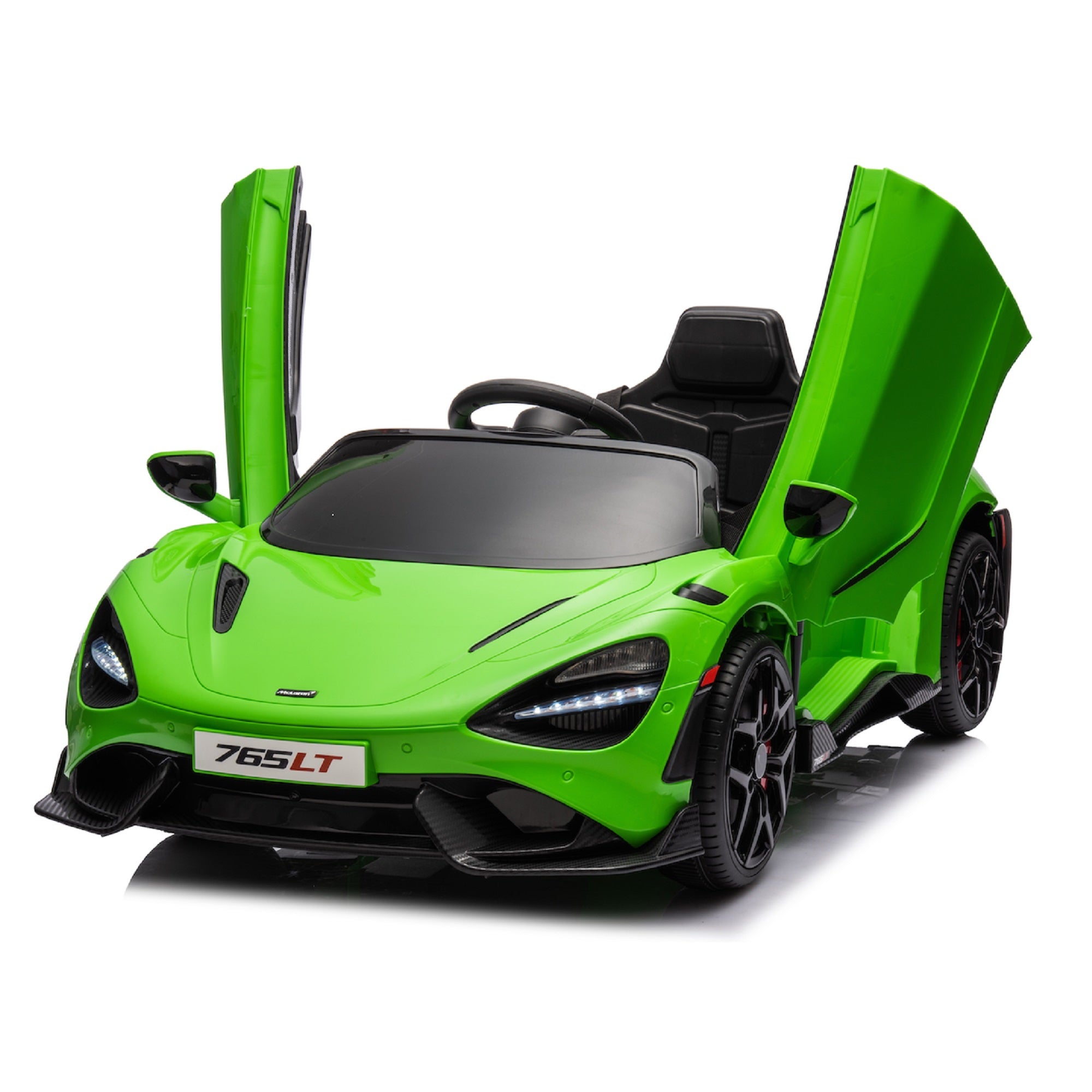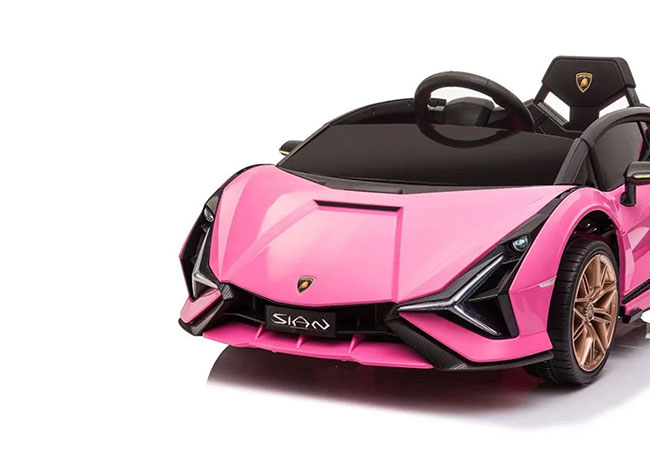Top Facts For Choosing Kids Cars
Top Facts For Choosing Kids Cars
Blog Article
What Should I Know About The Battery Life & Charging Time For An Electric Ride-On Child's Car?
Understanding the battery and charging time of an electric kids' ride-on vehicle is crucial to ensuring optimal performance and continuous time for play. Here's everything you need to know about - Battery type -
Most electric ride-on cars for kids use rechargeable batteries, typically lithium-ion or lead acid batteries. Lithium-ion batteries generally offer longer battery lifespan and quicker charging times than lead-acid batteries.
Capacity of Battery -
The battery size, which is measured in amperehours (Ah) or watthours(Wh), will determine the amount of time a vehicle can run on just one charge. Batteries with high capacity allow for longer playtime, without needing recharge.
Run Time -
The duration of the run is the highest quantity of continuous operation an electric ride on car can provide on a single charge. The run time of an electric ride-on automobile will vary depending on the factors like the battery capacity and motor power. It also depends on the terrain as well as the amount of weight the driver.
For electric ride on cars The typical runtime for electric ride on cars is 30 minutes up to 2 hours on one battery charge. However, certain batteries with high capacity may offer longer run times.
Time to Charge
The time for charging is the time required to recharge the battery fully after depletion. The charging time is contingent on the charger's specifications as well as the battery's capacity and charging method.
The charging times for electric rides on automobiles are generally between 8 and 12 hours. Certain models could provide faster charging times, specifically with lithium-ion batteries.
Safety and longevity of the battery are dependent on charging the battery according to the guidelines of the manufacturer. Battery performance and durability can be affected by overcharging or undercharging.
Charge Methods Charge Methods
Electric ride-on cars are generally equipped with a charger that connects to a standard outlet in the home. Certain models come with fast-charging capabilities or smart charging systems which monitors the state of charge and adjusts rate of charging accordingly.
To ensure that the battery is not damaged or electrical system, make sure that the charger as well as the port of the ride-on is compatible.
Additional Batteries
Some electric ride-on vehicles offer the option to purchase additional batteries or spare batteries to allow for longer playtime. If you have extra batteries it is possible to swap the depleted battery for one that is fully charged to minimize downtime.
Knowing the battery life of your electric kids' ride-on car and its charging times will enable you to ensure that your child enjoys exciting and fun adventures while exploring their world. Continuously charging the battery and following appropriate charging guidelines will maximize battery life and performance. Have a look at the best remote control childrens cars for website info including toy car toy car, toy a car, toy toy cars, kiddies cars, electric toy car, car for toy, remote control childrens car, kids electric cars, toy car, remote control childrens car and more. . 
How Can Kids Car Models Be Used Outdoors And Indoors?
Cars for children have specific features to fit different environments and scenarios that are indoors or out. Here are some of the differences in these car designs indoor Use Cars
Size and weight The majority of indoor cars are smaller and lighter to allow them to fit in small spaces such as living rooms, bedrooms, and hallways. They're small enough to fit in narrow spaces, tight corners and also avoid damaging walls and furniture.
Low Ground Clearance - Indoor use cars have a lower ground clearance, which prevents them from getting stuck or snagged on obstacles such as rugs, carpets, or thresholds. This guarantees smooth and uninterrupted movement across indoor surfaces without fear of getting stuck or tipped over.
Smooth Wheels. The wheels utilized in indoor vehicles are constructed from materials such as rubber, plastic, or laminate to give them traction. They are made to reduce the sound and avoid scratching or scuffing surfaces in indoor environments.
Tempo Limit - Cars in indoor environments generally have a limit on speed to ensure safe and controlled driving in small areas. This can help avoid collisions or accidents with walls, furniture or other indoor obstacles.
Outdoor Use Cars -
Durable Construction - Cars designed to be used outdoors are constructed with tough materials like strong plastic or steel to endure rough handling and elements of the outdoors like sunlight, humidity and temperature fluctuations. They are designed to withstand the extreme conditions of outdoor use.
The higher the clearance of the ground is, the better equipped they will be to deal with bumps and uneven terrain. This enables them to maneuver over rough surfaces like dirt, grass or gravel, without becoming trapped or causing damage.
Traction tires - Tires designed for outdoor vehicles typically come with treads and patterns which provide greater grip and traction when driving on slippery or uneven terrains. This provides better control and stability while driving on terrains that are outdoor.
Weather Resistance. Outdoor cars are often equipped with weather-resistant parts like sealed electronics, waterproof casings and rust-resistant materials. This is in order to shield them from environmental damages. They are able to endure the elements of rain, mud, or puddles without compromising performance.
High Speed - Cars made for outdoor use have greater speeds because they are designed to handle the open areas and distances encountered in nature. Children can have an adventurous and thrilling riding experience.
These characteristics and design elements can help parents select the best car for their children to suit their usage requirements and the environment in which they live. Follow the best discover more for ride on toys for more examples including kiddies cars, kiddies cars, kiddies cars, car electric ride on, childrens ride on, childrens ride on, two seater electric cars, childrens ride on, childrens ride on, childrens ride on and more. . 
How Do You Create An Amount For A Ride-On Automobile For Your Child?
The process of budgeting for a ride-on vehicle for your child requires taking into consideration many aspects that include quality, durability and long-term use. You should also take into consideration your financial situation. How to set the budget for your ride-on car to make the most of your investment Find the average price
Start by looking up the average cost of a ride-on car that have the features you want. Online retailers, toy stores, and manufacturer websites can provide pricing information for different models.
Select Must-Have Features -
Decide which features your child needs to ensure their safety and enjoy. The cost of a ride-on automobile can be affected by features such as realistic sound, working headlights and seatbelts.
Prioritize features by comparing your budget with the preferences of your child.
Be aware of durability and longevity Take into consideration longevity and durability
Look for sturdy ride-ons that are made of high-quality materials such as metals and plastics, which can withstand repeated use and extreme outdoor conditions.
You can also ask parents for their opinion and read reviews to determine the reliability of a vehicle. The initial cost of a reliable car can help you save money over time by preventing frequent repair and replacements.
Comparing the Costs of different retailers
Compare prices from various retailers to determine the best value for your dollars. Check for sales and discounts in local toy stores, department stores and online retailers.
Look for clearance, sales or discounts that will help you save on your purchase, but without compromising quality.
Determine additional costs
If you're considering a ride on car for your child, consider the extra costs, such as transportation fees, taxes and accessories.
Budget to cover the full cost of ownership. This includes all accessories or necessary maintenance expenses.
Set a realistic budget -
Set up a realistic budget based on your financial and research situation. This will allow you to align your priorities with your needs. Think about features, durability and durability when determining the best cost you're willing to pay for your ride-on car.
Spending too much on unnecessary features or products that do not add value to the enjoyment of your child isn't recommended.
Consider Value Over the Long term -
Assessing the long-term value of your kid's automobiles in terms of its durability, adaptability and the capacity of your child to develop. It could be worthwhile investing in a higher-end model with more features over the long term.
If you set a reasonable budget and compare the quality, features, and long-term value of each car for your ride-on child and you'll find it's worth every penny. Keep your budget in check and prioritize features that will keep your child safe and safe. Check out the top rated Mercedes ride on car kidscars.co.uk tips for website recommendations including toy cars, a toy car, toy cars toy car, electric car ride, childs car toy, toy cars, toy with car, ride a toy, 2 seater electric cars, electric toy car and more. .